Ligamentum Flavum Hypertrophy: Safe Care Options
The Ligamentum flavum hypertrophy is a structural spinal problem that often narrows the spinal canal, potentially placing pressure on nearby nerves. This thickening of the ligamentum flavum—typically due to aging, repetitive stress, or degeneration—can lead to symptoms such as stiffness, tingling, or discomfort in the back and lower limbs. At
Chiropractic Specialty Center® in Kuala Lumpur, our approach to ligamentum flavum hypertrophy emphasizes non-invasive care through a combination of chiropractic, physiotherapy, and rehabilitation.
We use gentle, non-rotatory techniques and posture-specific strengthening to reduce biomechanical stress while preserving spinal stability. Identifying the root causes of ligamentum thickening is key to effective care and long-term management. Our clinical team focuses on creating personalized plans that are safe, precise, and medically compliant—avoiding unnecessary surgical interventions whenever possible.
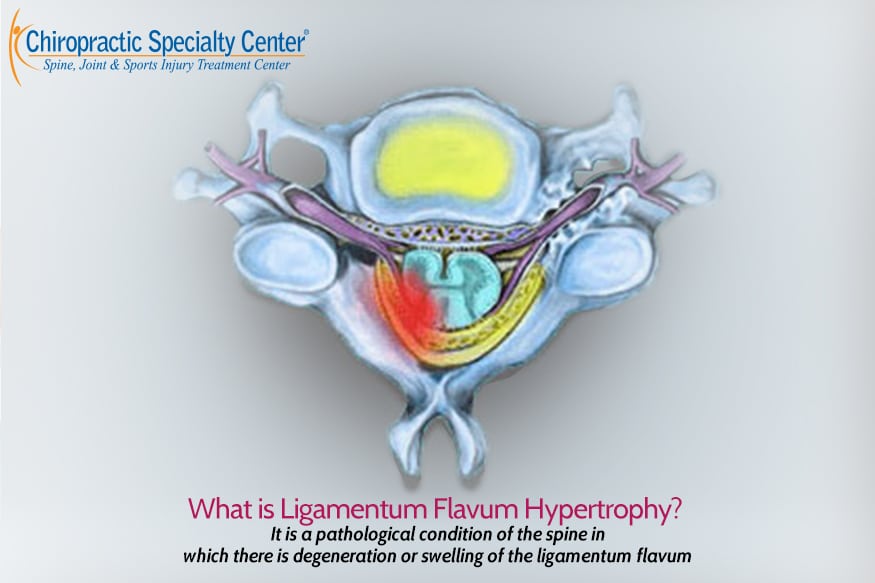
Addressing this condition with a structured, non-invasive approach may help improve flexibility and support spinal health. Chiropractic Specialty Center® (CSC) provides safe, non-surgical solutions designed to enhance mobility and reduce structural stress on the spine. By combining chiropractic techniques with physiotherapy, CSC offers targeted care to help manage ligamentum flavum thickening without invasive procedures.
Understanding how this ligament functions and the factors that contribute to its changes can help individuals take a proactive approach to spinal well-being. Learn more about available care options that may support long-term spinal function.
Top 3 Things to Know About Ligamentum Flavum Hypertrophy
- It’s Often a Degenerative Condition: Most cases develop over time due to wear and tear on the spine, especially in the lumbar region.
- It Can Lead to Spinal Canal Narrowing: Thickening compresses surrounding nerves, causing neurological symptoms.
- Non-Invasive Care Is Effective: Combining chiropractic, physiotherapy, and rehabilitation can manage symptoms and improve spinal function safely.
Ligamentum Flavum Hypertrophy & Its Role in Pinched Nerve Issues
Ligamentum flavum hypertrophy is a common contributor to spinal canal narrowing, especially in the lumbar region. As this ligament thickens, it may encroach into the spinal canal or neural foramen, reducing the space available for nerve roots to pass. When this happens, the result can be mechanical compression—often referred to as a pinched nerve.
According to peer-reviewed studies, degenerative thickening of the ligamentum flavum is frequently observed in individuals with spinal stenosis and chronic nerve-related symptoms like numbness, tingling, or shooting discomfort down the legs (Zhao et al., 2019; Moon et al., 2013). These symptoms tend to worsen with prolonged standing or walking and may be relieved with sitting or leaning forward, which temporarily opens the spinal canal.
If you’re experiencing signs of nerve involvement alongside ligamentum thickening, understanding the connection between the two is key. Our non-invasive approach focuses on spinal decompression, posture correction, and physiotherapy-guided rehab strategies to reduce structural pressure and promote healthier nerve function. Learn more about Pinched Nerve causes and care options here.
Get Personalized Non-Invasive Care for Ligamentum Flavum Hypertrophy
If you’ve been diagnosed with ligamentum flavum hypertrophy or are experiencing symptoms that suggest spinal canal narrowing, our integrative care programs may help. Chiropractic Specialty Center® in Kuala Lumpur offers spine-specific non-invasive care combining chiropractic, physiotherapy, and focused rehabilitation.
Contact us today to schedule your evaluation and begin your recovery.
Understanding Ligamentum Flavum and Its Role in Spinal Health
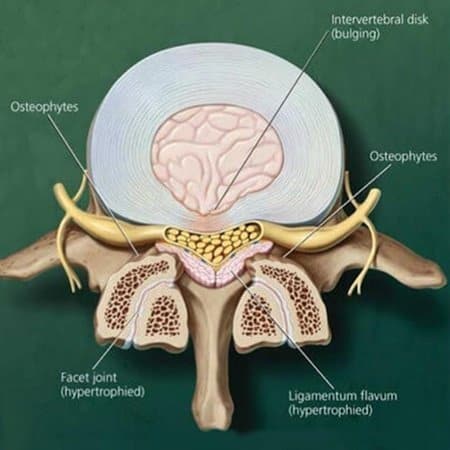
The ligamentum flavum is an elastic structure that connects spinal bones and plays a key role in maintaining posture. This ligament allows for smooth spinal movement and helps restore alignment after bending or flexing. In certain cases, repetitive strain, posture-related stress, or structural changes may contribute to thickening of the ligament, which can influence spinal mobility.
This condition is often observed in the lower back, where the ligament plays a significant role in weight-bearing movements. While changes in ligament structure can develop gradually, addressing these concerns early with non-invasive methods may help maintain flexibility and overall spinal function.
A balanced approach that includes chiropractic care and physiotherapy can help support spinal health while ensuring safe and effective recovery. Taking steps to improve posture, movement mechanics, and overall spinal alignment can further enhance long-term well-being.
The Importance of Ligamentum Flavum in Spinal Health

The ligamentum flavum is an essential structure that supports spinal alignment and mobility. This ligament helps maintain posture, stabilizes spinal joints, and assists in movement. Due to its elastic properties, it allows the spine to return to its natural position after bending or flexing.
Over time, repetitive movements, posture-related stress, or structural changes may contribute to thickening of the ligament, which can influence spinal mobility and flexibility. These changes may be associated with spinal discomfort, stiffness, or limited movement, particularly in the lower back.
Factors That Contribute to Ligamentum Flavum Changes
The thickening of the ligamentum flavum may develop due to several factors, including:
- Postural Strain: Extended periods of sitting or poor posture may increase stress on the spinal ligaments.
- Repetitive Motion: Frequent bending, lifting, or twisting movements may contribute to ligament variations over time.
- Spinal Alignment Changes: Variations in vertebral positioning may increase stress on supporting structures.
- Age-Related Changes: Ligament elasticity may naturally decrease over time, impacting flexibility.
- Movement Mechanics: Improper lifting or movement patterns may contribute to excessive strain on the spine.
Addressing these factors through targeted care can help support spinal mobility and overall function.
How Ligamentum Flavum Supports Spinal Stability
The ligamentum flavum plays an essential role in maintaining spinal alignment and preventing excessive movement between vertebrae. Its functions include:
- Postural Support: Helps maintain spinal position during movement.
- Joint Protection: Limits excessive movement to prevent structural stress.
- Alignment Restoration: Assists in returning the spine to its natural position after bending or flexing.
These functions are crucial for overall spinal health. Changes in ligament structure may alter spinal movement patterns, making it important to maintain flexibility and alignment through non-invasive care.
Non-Invasive Solutions for Ligamentum Flavum Changes
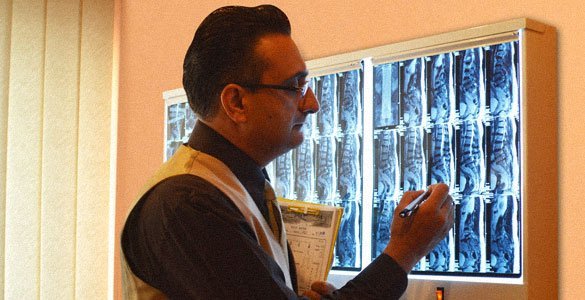
A non-surgical approach may help manage ligamentum flavum thickening while improving spinal function. Chiropractic care and physiotherapy provide targeted solutions that focus on mobility, alignment, and spinal health. At Chiropractic Specialty Center® (CSC), non-invasive techniques are used to support flexibility and reduce structural stress on the spine.
CSC integrates advanced methods, including spinal decompression and tailored chiropractic adjustments, to improve spinal movement and function. These care programs aim to address the underlying causes of ligament variations while ensuring long-term spinal stability.
Targeted Chiropractic and Physiotherapy for Spinal Health
CSC offers a combination of chiropractic and physiotherapy approaches that support spinal alignment and mobility. These methods may include:
- Chiropractic Adjustments: Gentle, targeted techniques designed to support spinal alignment.
- Physiotherapy Techniques: Focused methods to improve flexibility and strengthen supporting structures.
- Movement-Based Strategies: Exercises tailored to enhance mobility and reduce spinal stress.
This approach provides a comprehensive solution for individuals seeking non-invasive methods to maintain spinal health.
Convenient Care Locations in the Klang Valley
CSC operates multiple centers across the Klang Valley, providing easy access to expert spinal care. Our locations include:
- Kuala Lumpur (Bukit Damansara)
- Sri Petaling
- Bandar Sri Damansara (near Desa ParkCity)
Each center offers advanced care programs tailored to individual needs, ensuring a supportive approach to spinal well-being.
Spinal Decompression and Advanced Care Solutions
CSC follows structured spinal decompression protocols designed to improve spinal alignment and function. Our approach integrates:
- Chiropractic and Physiotherapy Techniques
- Customized Movement Plans
- Spinal Decompression Methods
By incorporating these strategies, CSC aims to enhance spinal mobility and overall well-being.
Understanding the Role of Elastin in Ligament Function
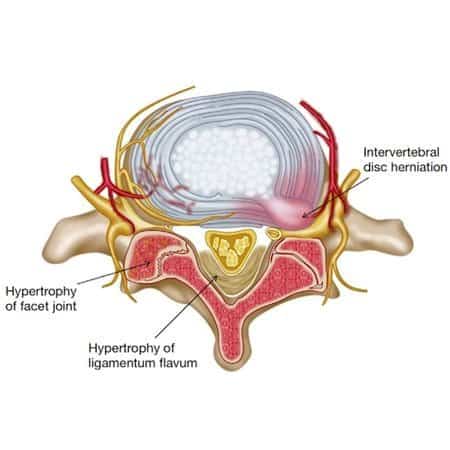
Elastin is a structural protein that contributes to the flexibility of ligaments, including the ligamentum flavum. This protein allows tissues to return to their natural shape after movement. Elastin is found in various structures, including:
- Ligaments and Tendons: Provides support and flexibility.
- Spinal Discs: Helps maintain disc structure and mobility.
- Other Connective Tissues: Supports movement in multiple areas of the body.
Maintaining elastin levels through proper movement, posture, and spinal care can help support long-term flexibility and function.
Elastin and Cartilage in Spinal Ligaments
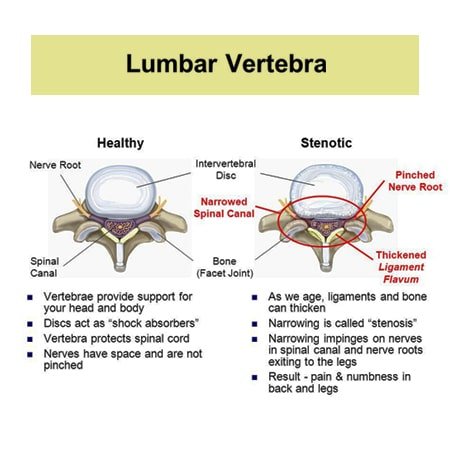
Research article suggests that repetitive stress may lead to structural changes in the ligamentum flavum, contributing to variations in its flexibility. Healthy ligamentum flavum contains a mesh-like elastin structure that allows for movement and prevents excess pressure on surrounding spinal structures. Changes in this mesh, along with alterations in collagen composition, may lead to increased ligament thickness over time.
At Chiropractic Specialty Center® (CSC), our non-invasive methods focus on supporting spinal health and promoting recovery. By combining targeted care with movement-based strategies, CSC provides personalized solutions to enhance spinal flexibility.
Factors Contributing to Ligamentum Flavum Thickening
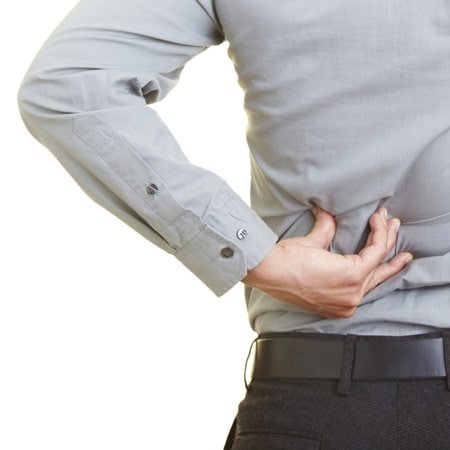
Several factors may contribute to variations in ligamentum flavum structure, including:
- Structural Stress: Increased strain on the ligament due to repetitive motion.
- Collagen Variations: A shift in collagen composition affecting ligament flexibility.
- Movement Patterns: Improper lifting or repetitive strain on spinal structures.
Additional Contributing Factors:
- Postural Strain: Extended periods of poor posture.
- Repetitive Motion: Frequent bending, heavy lifting, or high-impact activities.
- Minor Injuries: Small, untreated injuries that accumulate over time.
- Structural Changes with Age: Natural variations in ligament flexibility over time.
Preventive Measures
Supporting spinal alignment and addressing minor spinal concerns early may help reduce excessive strain on the ligamentum flavum. Proper movement mechanics and structured care programs may further contribute to spinal well-being.
For more information on non-surgical care for ligamentum flavum thickening, contact Chiropractic Specialty Center® today.
Indicators of Ligamentum Flavum Thickening
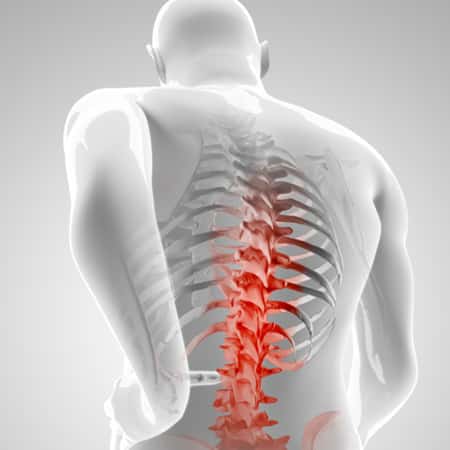
Changes in ligament structure may develop gradually. Early stages may not cause noticeable symptoms, but as variations progress, they may influence mobility and spinal function.
Potential Indicators in the Lumbar Spine:
- Localized discomfort in the lower back or surrounding areas.
- Sensations such as tingling or numbness in the lower limbs.
- Difficulty maintaining certain positions for extended periods.
- Weakness or challenges with movement.
Potential Indicators in the Cervical Spine:
- Stiffness or discomfort in the neck and shoulders.
- Sensations of tingling or weakness in the arms or legs.
- Changes in balance or coordination.
- Difficulty with fine motor tasks.
If you notice any of these indicators, early intervention with a structured care plan may help support spinal health and mobility.
Early Evaluation and Non-Invasive Solutions
Seeking an early evaluation for spinal changes may help address concerns before they progress. Chiropractic care and physiotherapy provide non-invasive strategies to support mobility, alignment, and spinal flexibility.
At Chiropractic Specialty Center® (CSC), our collaborative approach combines advanced spinal care methods to promote long-term spinal health. Our structured programs focus on safe, effective techniques that support movement, posture, and spinal alignment.
Common Spinal Segments Affected by Ligamentum Flavum Thickening
Changes in the ligamentum flavum are most frequently observed in regions that experience greater weight-bearing responsibilities and movement demands.
In the Lumbar Spine, the Most Affected Segments Include:
- L2-L3 Segment
- L3-L4 Segment
- L4-L5 Segment
- L5-S1 Segment
In the Cervical Spine, the Most Affected Segments Include:
- C4-C5 Segment
- C5-C6 Segment
- C6-C7 Segment
Among these, C5-C6 is highly mobile and often associated with additional structural changes, such as variations in spinal disc composition or joint movement patterns.
Recognizing Cervical Spine Ligamentum Flavum Changes
Changes in the cervical spine may present differently depending on the extent of structural variation.
- Mild Indicators: Stiffness in the neck or upper back.
- Localized Discomfort: Sensations in the neck, shoulders, or mid-back.
- Nerve-Related Sensations: Pinched nerves are all too common and a pinched nerve often cause tingling, numbness, or variations in sensation in the upper limbs.
- Motor Function Changes: Weakness in arms, hands, or coordination difficulties.
- Severe Indicators: Significant mobility challenges.
If symptoms are present, an assessment by a qualified healthcare provider may help determine suitable strategies for spinal care.
Considering Non-Surgical Care for Chronic Spinal Concerns

For individuals with ongoing spinal challenges, non-invasive methods may provide a sustainable alternative to more aggressive interventions.
Points to Consider Regarding Certain Procedures:
- Some approaches may increase scar tissue formation in spinal structures.
- Targeted interventions that support spinal alignment may provide a more structured recovery approach.
- Long-term spinal stability benefits from a focus on movement, posture, and flexibility.
At Chiropractic Specialty Center®, we emphasize a patient-centered approach to spinal care, integrating chiropractic methods, physiotherapy strategies, and movement-based solutions. Contact us today to explore non-invasive methods designed to support spinal function and mobility.
Non-Invasive Solutions for Ligamentum Flavum Thickening
CSC’s chiropractic care and physiotherapy services provide structured, non-invasive methods to support spinal health and mobility. At Chiropractic Specialty Center® (CSC), we integrate these approaches with advanced technology to promote spinal flexibility and alignment.
CSC’s structured programs focus on movement-based strategies that address ligamentum flavum thickening while supporting overall spinal function. By combining chiropractic techniques with physiotherapy, CSC offers targeted care that helps improve mobility without invasive procedures.
For those seeking a non-surgical approach to spinal care, CSC provides effective methods tailored to individual needs.
Considering Non-Surgical Care for Ligamentum Flavum Thickening
Surgical procedures should be considered only in rare cases where significant neurological concerns, such as bowel or bladder dysfunction, are present. Conditions linked to ligamentum flavum thickening, such as spinal canal narrowing or structural variations, may often be managed through non-invasive solutions.
Surgical interventions, including laminectomy or fusion procedures, may alter spinal function permanently. In some cases, these methods do not restore full mobility and may require additional recovery strategies. Instead, a targeted, non-surgical approach offers structured solutions designed to maintain long-term spinal function.
For most individuals, chiropractic care and physiotherapy provide effective, non-invasive options that enhance spinal stability and mobility.
Targeted Non-Surgical Solutions for Ligamentum Flavum Health
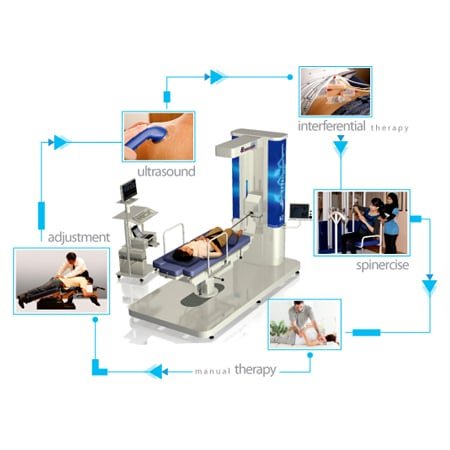
CSC offers a comprehensive care system designed to support ligamentum flavum function and associated spinal concerns. Our approach integrates:
- Chiropractic Care: Gentle, targeted methods to support spinal alignment.
- Physiotherapy Techniques: Focused strategies to improve flexibility and stability.
- Lifestyle and Movement Guidance: Customized plans that encourage safe movement patterns and postural improvements.
This structured approach helps address the underlying causes of spinal ligament changes, providing long-term support for spinal health.
How Effective Is Chiropractic Care for Ligamentum Flavum Changes?
When applied correctly, chiropractic care supports spinal flexibility and alignment. At CSC, our chiropractors use precise methods to create personalized care programs based on each individual’s spinal needs.
Key features of CSC’s chiropractic approach include:
- Gentle and controlled adjustments designed to enhance spinal movement.
- Targeted techniques that help improve ligament flexibility.
- Integration with physiotherapy to provide a balanced recovery approach.
By focusing on non-invasive spinal care, CSC helps individuals improve mobility while ensuring long-term spinal health.
Chiropractic Specialty Center®: A Non-Surgical Approach to Ligamentum Flavum Health
Chiropractic Specialty Center® (CSC) provides non-invasive solutions for ligamentum flavum thickening through an integrative approach combining chiropractic care, physiotherapy, and advanced spinal technology. CSC’s methods focus on improving spinal mobility, flexibility, and overall function without invasive procedures.
CSC’s approach is tailored to support spinal stability by using gentle chiropractic adjustments alongside physiotherapy techniques that help improve movement and alignment. These techniques ensure that the ligamentum flavum remains flexible, preventing excessive structural stress on the spine.
Through targeted care, CSC promotes spinal mobility and postural alignment, helping individuals restore function and movement safely. By combining advanced technology with personalized programs, CSC provides structured spinal support for those seeking safe, long-term solutions for spinal ligament health.
Lifestyle Tips for Spinal and Ligament Health
Maintaining spinal health requires a combination of healthy movement habits and postural awareness. Implementing the following strategies can help support long-term spinal flexibility and function:
- Maintain Proper Posture: Sitting and standing with a neutral spine reduces strain on ligaments.
- Incorporate Gentle Movement: Engaging in low-impact activities such as walking or swimming promotes flexibility.
- Practice Safe Lifting Techniques: Lifting with the legs rather than the back minimizes spinal stress.
- Support Spinal Alignment During Sleep: Using a supportive mattress and proper pillow positioning helps maintain spinal balance.
- Hydration and Nutrition: Staying hydrated and consuming nutrient-rich foods supports tissue health and flexibility.
- Manage Daily Activities Mindfully: Avoid prolonged sitting or repetitive movements that may contribute to structural stress.
Chiropractors and physiotherapists can provide additional guidance on movement patterns and postural improvements. By making conscious lifestyle adjustments, individuals can support spinal ligament health and overall mobility.
Serving Nearby Communities for Ligamentum Flavum Hypertrophy
- Taman Tun Dr Ismail (TTDI): TTDI residents can access focused care for ligamentum flavum thickening with gentle spine-enhancing techniques and physiotherapy exercises tailored to relieve pressure and improve spinal mobility.
- Bangsar & Bangsar South: Residents from Bangsar and Bangsar South rely on our clinic for structured management of ligament thickening. We offer non-force chiropractic alignment and targeted muscle rehabilitation to support spinal canal space.
- Mont Kiara: In Mont Kiara, our care combines spinal decompression, movement restoration techniques, and core conditioning to address ligamentum flavum changes—promoting better flexibility and nerve space.
- Sri Hartamas: Sri Hartamas locals benefit from posture correction routines, gentle spinal unloading, and muscle support methods to ease symptoms of ligamentum flavum hypertrophy and improve comfort.
- Mid Valley & KL Eco City: Mid Valley and KL Eco City visitors can access our tailored spine care for ligamentum flavum thickening, including alignment support, muscle activation, and functional exercises designed for canal clearance.
- Solaris Mont Kiara & Publika: Near Solaris Mont Kiara or Publika, we offer careful, gradual spine decompression and structured physiotherapy to help patients with ligamentum flavum hypertrophy regain spinal flexibility and reduce nerve compression.
Care at Our Main Centers in Greater Kuala Lumpur
- Bukit Damansara – Kuala Lumpur: At Bukit Damansara, we use gentle chiropractic adjustments, spinal decompression, and muscle-rehabilitation plans to address ligamentum flavum thickening while improving spinal canal space.
- Sri Petaling & Bukit Jalil – Kuala Lumpur: Our Sri Petaling & Bukit Jalil clinic provides personalized care for ligamentum flavum hypertrophy, combining posture enhancement, alignment techniques, and rehabilitative physiotherapy for sustained spinal movement.
- Bandar Sri Damansara – Serving Northwest KL: In Bandar Sri Damansara, we focus on ligamentum flavum support using non-force spine correction and structured muscle engagement exercises aimed at relieving pressure and improving flexibility.
- Petaling Jaya – PJ Spine & Disc Center: At our Petaling Jaya clinic, we deliver safe, structured care for ligamentum flavum thickening, including spinal canal preservation techniques, decompression, and tailored physiotherapy plans.
- Shah Alam (Setia Alam & Kota Kemuning): Serving Shah Alam, Setia Alam, and Kota Kemuning, our center addresses ligamentum flavum hypertrophy with evidence-based spine and physiotherapy protocols focused on supportive muscle and alignment strategies.
- Bangi: Our Bangi center offers non-invasive spine care for ligament thickening, combining decompression, core support, and posture correction—no injections or high-intensity methods included.
Yama Zafer, D.C. – Ligamentum Flavum Hypertrophy: Non-Invasive KL Care
Yama Zafer, D.C., with an educational background in physiotherapy and chiropractic, graduated from Cleveland Chiropractic University in Kansas City and has spent nearly three decades in physiotherapy and chiropractic—read more about Y. Zafer on his official bio page.
Peer-Reviewed Medical Citations for Ligamentum Flavum
- Kalichman L, et al. “Ligamentum flavum hypertrophy in lumbar spinal stenosis.” Spine J. 2009;9(4):326–331.
- Park JB, et al. “Histologic changes of ligamentum flavum in degenerative lumbar stenosis.” Spine. 2005;30(1):68–73.
- Sairyo K, et al. “Pathomechanism of ligamentum flavum hypertrophy: role of inflammation.” Spine. 2005;30(23):2689–2694.
- Ahn SS, et al. “Comparison of surgical and non-surgical care for lumbar spinal stenosis.” J Bone Joint Surg Am. 2013;95(3):195–204.
- Genevay S, Atlas SJ. “Lumbar spinal stenosis.” BMJ. 2010;343:d6436.
- Chou R, et al. “Diagnosis and care of low back pain.” Ann Intern Med. 2007;147(7):478–491.
- Issack PS, et al. “Degenerative lumbar spinal stenosis: a review.” HSS J. 2012;8(2):103–112.
Page Update Statement
Page last updated on Thursday, July 12, 2025, with the H1 title: “Ligamentum Flavum Hypertrophy: Safe Care Options.”



Do you have NSD Therapy clinics in the East San Francisco Bay Area in California> I require my multi-level moderate to severe mid-Lumbar (worst at L3-4, based on MRI). Also, I have foraminal stenosis due mostly to Ligamentum Flavum, epidural lipomatous. MRI also showed facet hypertrophy and disc bulging. Symptoms include moderate achy/diffuse LBP, mild to moderate right shooting pain in the buttocks. Also suffer from leg pain, weakness, numbness, and tingling coming from L2-L3, L4-5 & L5-S1. Tinginglin is the greatest in toes (both sides). No pain with Valsalva, no claudication symptoms, no acute progressive weakness or bowel & bladder issues or incontinence, but occasional bowel urgency. Thank you1 com
Dear Dr. Marciano,
Thanks for posting on our blog. I will respond to your question through email shortly.
Hello. I have multiple degenerative disc diseases and ligamentum flavum hypertrophy. Do you have any offices in the Tampa Bay, Florida area?
Dear Margaret,
Please accept my apologies for not replying sooner. Unfortunately, at present, we are only located in Malaysia. We do not have any centers in the United States.
I am suffring from lingament flames d10 d11 on 20 years I am 56 year old present I am on wheel chair legs pain no movement. stesses right hand weakness left shoulder pain
Dear Bp Sing,
Thanks for posting a question. Hypertrophy of ligamentum flavum is a leading cause of spinal canal stenosis (shrinkage of the spinal canal). I suspect that you have a moderate to severe case of spinal canal stenosis resulting from a ligamentum flavum thickening. However, canal stenosis or ligamentum flavum hypertrophy at the D10-D11 will not cause issues in the shoulders, arms, or hands. Canal stenosis resulting from hypertrophy of Ligamentum flavum at D10-D11 can cause problems from mid-back down to your toes.
In your specific case, I suspect the issue to be related to an injury. Therefore, I encourage you to call our Bukit Damansara center at 03 2093 1000 to set up a consultation. You will need to bring all diagnostic imaging (MRI, CT & X-rays). Let us assess you and review your imaging to see if our methods of spine care can get you feeling better.
Your shoulder and arm symptoms are possibly due to a neck and upper back problem. We can assess that as well.
Hope this helped
Sir, I am suffering from degenerated disc disease involving c3-4,c4-5. I also have ligamentum flavum hypertrophy at c4-c5. What is the solution, sir, as I am in pain daily?
Thank you for posting your question. We can certainly help! Our neck and back pain treatments are through the combined efforts of our chiropractors and physiotherapists. In your case, we will also use advanced therapy devices to fix and repair as much of the damage as possible. The care we will provide can eliminate your neck pain and any pain that runs into the upper back, shoulders, or arms.
Thickening of ligamentum flavum and degenerative disc disease are two conditions that co-occur in the neck or back. They arise from repeated injuries to the spine. Surgeons recommend surgery, but they can be addressed through non-surgical methods. Our center offers the best non-surgical treatment for degenerative disc disease, slipped discs, spondylosis, neck pain, and back pain. Also, we provide advanced methods of treating hypertrophy of ligamentum flavum. I would encourage you to visit our center. Please call us on 03 2093 1000 to schedule an appointment. Please bring all your X-rays and MRIs. Let me and my team assess you.
Dear Anjanireddy,
Please forgive us for replying late. Spinal disc degenerations in the neck combined with hypertrophy of ligament flavum lead to compression of the spinal cord and nerves. These can become quite serious, as they are progressive in nature. Spinal disc disease and thickening of ligamentum flavum are difficult conditions to treat. As such, you will need focused treatments that are specialized through therapy devices, chiropractic, physiotherapy, and targeted rehabilitation. We have treated thousands of patients with similar conditions successfully. Please contact our center at 03 2093 1000 to learn about our services. We will be glad to answer your questions when you call. Also, our team members can help schedule a one-on-one consultation with one of our clinical team members.
Sir, do you have any branches in India?
Dear Chandra,
I am sorry, but as of now, we only have centers in Malaysia. Hopefully, one day we will expand to India and the Indian subcontinent.
I’m 77. I have all of the above. Do you have any office near the Lancaster, Pennsylvania, Downingtown, Pennsylvania, Reading Pennsylvania areas
Dear Ann,
Thanks for posting, but unfortunately, we do not have any offices in your area. And we wouldn’t know who to refer you to in Pennsylvania.
Do you have any centers in India where we can go for treatment?
Dear Mr. Jaykaran Singh,
Unfortunately, we don’t have any centers in India. The nearest one to you is in Kuala Lumpur, Malaysia.
I am also having the same back problem with pain shooting down my buttocks and legs. What can be done? Please advice.
Dear Mr. Ramu,
Back pain due to nerve impingement and impairments arising from a slipped disc, facet, and ligamentum flavum hypertrophy is treatable without surgery or injections. However, there aren’t many centers with adequate technology or skill sets to provide the needed conservative treatments.
In short, patients with multi-faceted issues (problems arising from two or more events in parallel) need personalized treatment plans focusing on root causes. In your instance, you will need highly specialized treatment through manual and therapy devices specialized for full recovery, and we can help. Our center is the leading non0-surgical clinic for the spine and joints; we have helped thousands recover. Give us a call today and schedule a consultation with one of our non-surgical spine specialists.
I hope this helps, do contact us on 03 2093 1000 or Whatsapp us at +(60)17 269 1873 for more information.
I had fusion surgery seven years ago for c4c5, and now I have ligament flavum thickening on c5c6 . Can you help me?
Dear America,
Patients with cervical fusions can be treated for pain and stiffness, which are common after surgery. We will not be able to provide you with the same level of care as we would for persons without fusions. Spinal fusions limit our ability to provide comprehensive care. However, we can provide treatments to help with the pain and stiffness you might be experiencing. I hope this helped.
I read your website about spine issues related to ligamentum flavum hypertrophy.
I am 31 years old; I had an accident and injured my neck (the soft tissue of my neck ). I started to have symptoms about three mounts ago. Now years after the trauma is causing severe chronic neck due to degenerative changes, including damage to my ligament flavum (hypertrophy and buckling of ligamentum flavum).
My ligamentum flavum hypertrophy involves the C3-C4 segments of my neck, causing compression of my spinal cord and nerves from the center to the left.
MY symptoms include neck pain, pins & needles, and tingling in the legs and hand. The pins & needles started last week. I am also experiencing pins & needles in my trunk, along with pain in the chest.
Moreover, my blood pressure increased with the systolic pressure ranging between 170 and 190m, but it is lower now, fluctuating between 110 and 130.
I like to find out if my condition is treatable without surgery, as I am not looking forward to neck surgery. Also, is there a way to help repair my Myelomalacia without getting surgery?
thanks
Dear Meni,
Thanks for posting your question about our neck pain treatment for soft tissue damage to spinal discs, spinal cord, and spinal soft tissues (muscles & ligaments).
Ligamentum flavum, also known as the yellow ligament, is a highly specialized soft tissue that functions as a ligament with a contractile ability like a muscle. Its’ ligament function is to connect spinal segments, while the muscular or contractile capabilities of the ligamentum flavum help assist with the extension of the spine (neck or back) when returning to an upright position from a bent or flexed posture or position.
Damage or hypertrophy of ligamentum flavum is typically seen among active gym-goers (deadlifts, free weight workouts, and intense leg press exercises), whiplash injuries as seen in sports injuries or car accidents.
Gym workout involving free weights or heavy lifting, especially with poor mechanics, is the leading cause of ligament flavum hypertrophy in the lower back. Hypertrophy of ligamentum flavum in the neck is almost always associated with a whiplash-like injury.
Whiplash is an acceleration-deceleration injury caused by hyperflexion and hyperextension of the neck. Acceleration-deceleration injury of the neck results from a forceful and sudden snapping movement of the head and neck—such injury damage the neck’s soft tissues, including the ligamentum flavum.
Thank you for submitting a link to your MRI video with your posted comment. Although our technical web team has removed the YouTube link you provided, I can assure you that I studied them carefully. Here are my findings based on the limited views I had of your cervical MRI video:
• Moderate to severe thickening of ligamentum flavum that compresses the spinal cord posteriorly on the left.
• Spinal cord compression dorsally on the left (back of the spinal cord on the left side) with signs of Myelomalacia (softening of the spinal cord).
• Retrolisthesis of C3 on C4 may have resulted from injuries to anterior and posterior spinal ligaments.
• Mild to moderate disc bulge at C3-C4
• Degenerative disc disease at multiple segments
Myelomalacia is a condition that softens and damages the spinal cord due to injury, hemorrhagic infarcts, or cervical myelopathy. In your comment, you mentioned a traumatic event that I suspect resulted from a whiplash-like injury. In such an instance, the head and neck forcefully extend and flex forward and backward, damaging the ligaments (including the spinal discs & ligamentum flavum), muscles, and spinal cord.
Discussion on your specific conditions:
The severity of damage and thickening in your ligamentum flavum on the left side of C3 and C4 leads me to believe that you suffered from a whiplash-like injury. Sudden and forceful injuries of the neck that damage the ligamentum flavum will certainly injure the spinal cord, spinal discs, spinal joints, and the remaining ligaments and muscles of the neck. Based on what I can see, there are signs of damage to all structures, most notable in the spinal cord, ligamentum flavum, and supportive soft tissues at C3-C4 spinal segments.
In addition to ligamentum flavum hypertrophy and cord softening, you have slipped vertebrae (retrolisthesis of C3-C4). Your third cervical segment (C3) appears to have slipped backward on your fourth cervical segment (C4). The backward slippage of a vertebra known as a retrolisthesis or spondylolisthesis results when the connecting ligaments are weakened due to degenerative condition or torn following an injury. The degenerative causes of retrolisthesis (spondylolisthesis) are typically seen in the elderly and, as such, may not apply to you.
X-rays of the cervical spine combined with your MRI are critical for accurately evaluating the injuries you sustained. Therefore, one of the first things you will need to do is get a comprehensive assessment of your neck’s stability with x-rays. I encourage you to get a complete cervical spine series (Davis series) to assess your cervical stability before proceeding with any form of treatment.
The Davis series consists of 7 views:
1). AP open mouth
2). AP lower cervical
3). Left oblique cervical
4). Right oblique cervical
5). Neutral lateral view of the cervical spine
6). Flexion lateral view of the cervical spine
7). Extension lateral view of the cervical spine
However, if you are not able to do a Davis series or if you are worried about the radiation exposure, I would recommend the minimum four views below:
1). AP cervical
2). Neutral lateral view of the cervical spine
3). Flexion lateral view of the cervical spine
4). Extension lateral view of the cervical spine
The most critical view needed for you are the side-views of your neck:
* Neutral lateral view of the cervical spine
* Flexion lateral view of the cervical spine
* Extension lateral view of the cervical spine
These three side-view x-rays or lateral x-rays are needed to assess the stability of your neck. More importantly, they are essential in planning your treatment.
Is it possible to get you better without neck surgery?
Yes, it is possible to get you better without surgery. However, the non-surgical treatment will need focused holistic therapies and consistency. Holistic means comprehensive; in other words, every aspect of your conditions must be identified and treated for you to get better. If you live in Malaysia, please contact our center on 03 2093 1000 to schedule an appointment with us. We will need to assess you in person thoroughly. During your consultation, we will discuss the possibility of getting your neck treated without surgery.
I hope this helped.
I learned a lot from reading your website. Thank you for the information. I receive no treatment, just drugs from Drs, and I’ve been in pain for 20 years. Is it too late for me? Thanks, Martha from California.
Dear Martha,
Thanks for posting your question and praising our published content on our blog and website pages. Hypertrophy of ligamentum flavum is a relatively common finding in patients with chronic neck and back issues. It often results from excessive loading, improper bending, injuries, or poor posture.
Unfortunately, most doctors do little for patients with thickening ligamentum flavum. Like you, many take medication to help with daily symptoms. Specialized & advanced methods of chiropractic treatment combined with physical therapy can help. The good news is that it is never too late to get the joints, ligaments, and spinal discs of the spine treated, including the ligamentum flavum. The aim of focused therapy is two folds:
1- To repair the damaged tissues as much as possible non-surgically
2- To prevent progression as thickening of ligamentum flavum is a progressive condition and a leading cause of spinal canal stenosis, foraminal stenosis, and disability in the longterm
I advise you to find a non-surgical center that offers chiropractic combined with physical therapy service (physiotherapy). The best therapeutic modalities that help include EWST Shockwave therapy, high-intensity laser therapy (HILT), and focused spinal decompression. Spinal decompression therapy should not be confused with DTS decompression as it is mainly a traction device. A better spinal decompression therapy device is the RxDecom® or comparable units. To dos & don’ts of ligamentum flavum include:
• Avoid bending and twisting activities, stretches, or therapy methods
• Avoid physiotherapy, physical therapy, and chiropractic treatments or therapy processes that incorporate twisting of the spine
• Do take breaks from sitting every 30 minutes and avoid sitting with a forward-leaning posture
• Start strengthening pelvic floor muscles with Kegel exercises, squats, and planks if your condition is stable
I hope this helped, and should you have any additional concerns or wish for more information, please WhatsApp our main center in Bukit Damansara (Kuala Lumpur, Malaysia).
Howdy, My wife has this condition primarily L3-L4 and L4-L5 and additional mild issues L1 through L-3. The orthopedic doctor prescribed McKenzie exercises, pain meds, and, if necessary, an injection and down the road surgery. I think it’s a bad idea! Proper exercise is the best approach. Is there anyone you know of in Tallahassee, Florida, she could go to?
Thanks,
Her Husband
Dear Mr. Lanier,
You are correct; surgery and injections are not the way forward. The best means of treating your wife is through focused therapies that target the L3-L4 and L4-L5 spinal discs. Also, McKenzie exercises may not be suitable as it causes the discs and ligamentum flavum to buckle more, causing more issues later. I am not aware of any clinic in Florida that can offer the same treatments that we do. But, I am confident that the great Sunshine State has many clinics that provide therapies similar to what we provide. You should start calling around integrative centers that combine chiropractic and physical therapy.
In the meantime, it would be good to have her ice her lower back for 15-minutes every two to three hours to decrease inflammation. She will also need to avoid the following:
1). No bending or twisting at the waist
2). Avoid any exercises that put her spine in a rotated position
3). Avoid sitting for longer than 45 minutes
4). Avoid sitting with a forward-leaning posture
I hope this helps.
Hi Doctor Yama,
My daughter is a chiropractic doctor in Indianapolis, Indiana, in the US. She has suggested that I contact you. I have had pain in both ankles for eight weeks. The pain worsens after walks or if I stand for 10-15 minutes.
I am a retired pain management physician. I have had Epidural steroid injections twice, but it has not helped. X-rays and MRIs have been taken. The MRI shows canal stenosis, disc bulge, facet hypertrophy, and ligamental hypertrophy. What is your advice for me?
Vinu Patel MD
Dear Dr. Patel,
Spinal disc bulges in the presence of facet and Ligamentum Flavum hypertrophy are leading causes of foraminal and central canal stenosis. The pain you are experiencing is possibly the result of compressed exiting and traversing nerves. Steroid injections may not be the best option. Therefore, you should look for integrative centers offering physical therapy with chiropractic. However, they should avoid stretching hamstrings, bending, twisting, or McKenzie exercises. I would encourage a course of non-rotatory chiropractic and physical therapy combined.
I have emailed you the therapies and treatments you need. I hope it helps
Respected sir, is collagen intake harmful to patients with ligamentum flavum hypertrophy? And if so, which supplements should we take in ligamentum flavum hypertrophy?
Dear Jai,
Collagen should not harm you, but you should get with your medical providers before you start taking any supplements. However, supplements alone are not sufficient to undo the effects of ligamentum flavum hypertrophy. To recover from aches and pains caused by ligamentum flavum hypertrophy, you will need a clinical team that targets and addresses the root causes of a thickened ligamentum flavum. A suitable treatment for patients with ligamentum flavum disorder is NSD Therapy®. NSD Therapy® service is a combination of chiropractic, physiotherapy, and rehabilitation that targets problematic segments in the spine. And in such an instance, you can start with supplements prescribed by your medical provider as an adjunct to focused treatments.
I am 38years old and have back pain with tingling and numb foot. I recently had an MRI of the Lumbar spine; below is my report; kindly assist.
The highlights of my MRI findings are as follows:
Multilevel ligamentum flavum hypertrophy and facet arthropathy. At L4-L5 level, mild central bulge causing minimal thecal sac indentation and minimal left lateral recess stenosis.
Dear Basit,
Thanks for posting a question. I suspect you have had back problems for some time, even if you had no symptoms. Back pain resulting from spinal disc bulges and herniations is treatable without surgery, even if it presents with hypertrophy of ligamentum flavum and facets (facet arthropathy).
Spinal joint arthritis (facet arthropathy) and thickening of ligamentum flavum (hypertrophy of ligamentum flavum) is all too familiar in patients with chronic back problems. When facet arthropathy, ligamentum flavum issues, and slipped discs (bulges and herniation) present together, they will cause some degree of the canal and foraminal stenosis (shrinkage in the size of the spinal canal and the openings between vertebra (lateral recesses).
Your surgeon may recommend surgery, but you should start with an effective conservative treatment program. Surgery should be considered only if conservative measures fail. Given your current situation, you require price treatments for your joints, spinal discs, and their associated soft tissue. In other words, you need therapy from centers and clinics with experience. Chiropractic Specialty Center® is one of the best places for patients similar to you, as we have the skillsets, therapy techniques, and integrative solutions, with a success rate of over 95%.
To recover, you should get treated through the combined efforts of chiropractors and physiotherapists. The best non-surgical treatment for you is the NSD Therapy® methods, an integrative back pain treatment in KL through therapy devices combined with personalized care through physiotherapy and chiropractic. If you live in Malaysia, you can WhatsApp us to book a consultation.
thank you for your attention and comment .
I can share with you my symptoms for at least 15 mounts .
problem with long walking (pain in legs after and weakness in 2 legs.
I have neck pain but in the last year it was less chronic neck pain (but before i have the problem with lower extremity i have a chronic neck pain for 6 years .
I was have a trauma to the neck , but this was crash head in the backstroke swimming (to the wall of the pool ) in 2010.
what do you think (my ossification or hypertrophy LF in my case ]
it is caused by trauma (I was accident in a swimming pool hit my head on a wall when I 20 (it is happened because the coach teach me technic swimming backstroke (don’t warning me their is no FLAG to see when the end of the pool end (for swimmer of back stroke )
of course after trauma life with degeneration increase stress on the facet joint (causes facet arthritis)
I m very be a ware from 2016 to my problem with the disc in the neck (after first MR ) .
so i use a good ergonomic lifestyle,low impact exercise, and chin tuck (but I m not accepted to get chiro manipulation because i think this will be dangerous (but get some exercise like chin tuck, and also some stretches, prevention .
but all of this not prevent from i get the LF buckling in c3-4 .
I share with you the link for 1 minute https://youtu.be/GwNqMEClqKk
(what is situation now 22 to 23 and u can also see image from 2016 .
MY MJOA score it is 16 points .
thanks
I live in the El Paso Tx or Las Cruces New Mexico area and am trying to find the specialist as noted in your articles. Can you find or recommend any centers in these areas? Thank you
Dear Patricia,
Thank you for reaching out for assistance in finding a specialist in the El Paso, TX, or Las Cruces, NM, areas. While we do not have direct affiliations with specific centers in those regions, I recommend contacting local hospitals, chiropractic clinics, or physical therapy centers or searching online for healthcare providers specializing in the treatment you require. Websites like Healthgrades or local hospital sites can provide detailed profiles and reviews of specialists in your area.
Additionally, your primary care physician can be a valuable resource for referrals to trusted specialists nearby. If you need further assistance or have other health-related questions, please don’t hesitate to contact us on our WhatsApp line at +6016-269-1870. We’re here to help!
Thank you for considering our recommendations, and we wish you the best in finding the right specialist for your needs.
Kind regards,